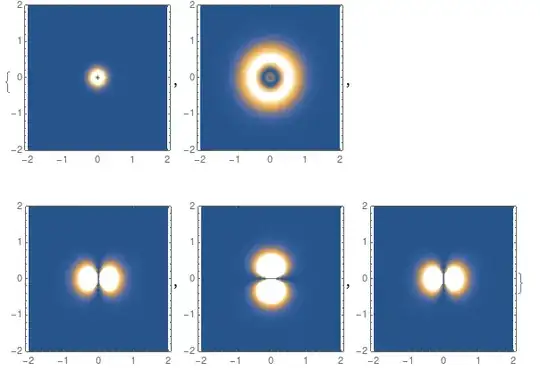Take a single proton and electron. Write $n,\ell,m$ for the quantum numbers of the electron, and $1/2$ or $-1/2$ for its spin.
The space of states of this system is the separable Hilbert space $V$ with orthonormal basis $$\{v_{n,\ell,m,\pm 1/2}\ : \ n,\ell,m \text{ as above}\}.$$ The Hamtiltonian $H$ is a Hermitian operator on $V$.
Question: I'm interested in the probability of one state turning into another, or equivalently in $$\langle v_{n,\ell,m,\pm 1/2}|H|v_{n',\ell',m',\pm' 1/2}\rangle.$$ What is this, as a function of $n,n',\ell,\ell',m,m',\pm, \pm'$?
I'm happy for the answer to be an integral, a sum etc. as long as it's a function of those variables. Since the state is completely described by $n,\ell,m,\pm 1/2$, no other variables (like $\textbf{S},\textbf{L},\psi,...$) should appear, unless they are some clearly-stated functions of $n,\ell,m,\pm 1/2$.
Edit: to be clear, $n,\ell,m$ are the principal, azithumal and magnetic quantum numbers.
Secondly, my question is what the real-life entries of $H$ are (because up to a little ambiguity they can be observed). i.e. what are leading few terms after the diagonal, and what physical effects are they caused by?
For instance, some effects which might add non-diagonal terms to $H$: $n$ changing due to absorption/emission of a photon, the spin may effect the energy a bit (causing an "$n$-$\pm 1/2$" off-diagonal term), some "$\ell$-$\pm 1/2$" off-diagonal terms due to the $\mathbf{L}\cdot\mathbf{S}$ terms I've seen before in similar contexts, etc.
